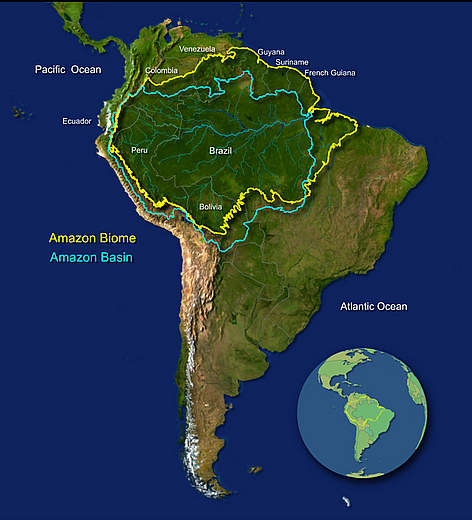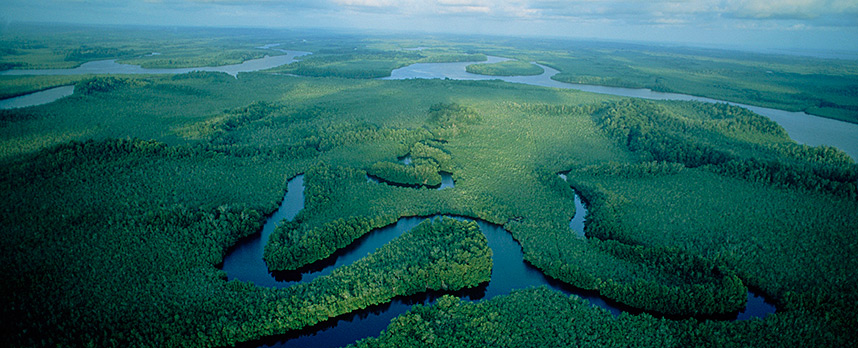It’s very difficult to measure how dense a forest is. A dense forest is a forest thick with trees or having trees growing very closely together.
Here are the top 5 most dense forest in the world.
1. Amazon Basin

Amazon basin in South America is home to the world’s largest contiguous tropical rain forest. The Amazon is the world’s second longest and the most voluminous river spreading across nine countries. The Amazon basin encompasses 7,000,000 square kilometers (1.2 billion acres), while the forest itself, home to the greatest variety of plants and animals on Earth, occupies some 5,500,000 square kilometers.
The majority of the forest is contained within Brazil, with 60% of the rain forest, followed by Peru with 13%, and with minor amounts in Colombia, Venezuela, Ecuador, Bolivia, Guyana, Suriname, and French Guiana. One fifth of all the world’s plants and birds and almost one tenth of all mammal species are found here.
2. Congo Basin

The Congo river, second longest river in Africa, generates the second largest contiguous rain forest in the planet along with it’s tributaries. his vast forest runs through six African countries (Cameroon, Central African Republic, Gabon, Congo and Zaire) stretching from the Mountains of the Moon in the eastern Democratic Republic of Congo to the coast of the Gulf of Guinea. It is a land made famous by the adventures of Stanley and Livingstone and known as a place of brutality and violence for its past.
3. Southeast Asia

The Southeast Asian rain forests are the oldest, the most consistent rain forests on the planet. These forests are there since Pleistocene Epoch for more than 70 million years. Southeast Asian forests are one of the Earth’s most biologically diverse forests. These rain forests stretch from India and Burma in the west to Malaysia and the islands of Java and Borneo in the east.
4. Australian Temperate Forest

Comprising the lowland temperate forests around the Great Dividing Range, the Southeast Australian Temperate Forests comprise a wide variety of vegetation. Unlike the rest of mainland Australia, this region is well-watered with a temperate climate. A diverse mix of vegetation is found throughout this ecoregion, including coastal vegetation, dense heath, temperate rainforest, riparian communities, wet sclerophyll forests, dry sclerophyll forests, and eucalyptus woodlands.
The quintessential Australian genus, Eucalyptus dominates in all better-watered regions of Australia, including the Southeast Australia Temperate Forests. There are approximately 700 species of Eucalyptus, and only seven are found outside Australia. Recently this forest has been found to be the home of the world’s most carbon-dense forests, according to researchers from the Australian National University
5. Taiga

The Taiga biome, southerly part of the biome also known as Boreal forest, stretches across a large portion of Canada, Europe and Asia. It is the largest biome in the world. It has a harsh continental climate with a very large temperature range between seasons.
There are two major types of taiga, closed forest, consisting of many closely-spaced trees with mossy ground cover, and lichen woodland, with trees that are farther-spaced and lichen ground cover; the latter is more common in the northernmost taiga. The taiga is home to a number of large herbivorous mammals and smaller rodents.
Source : Relive Earth


















